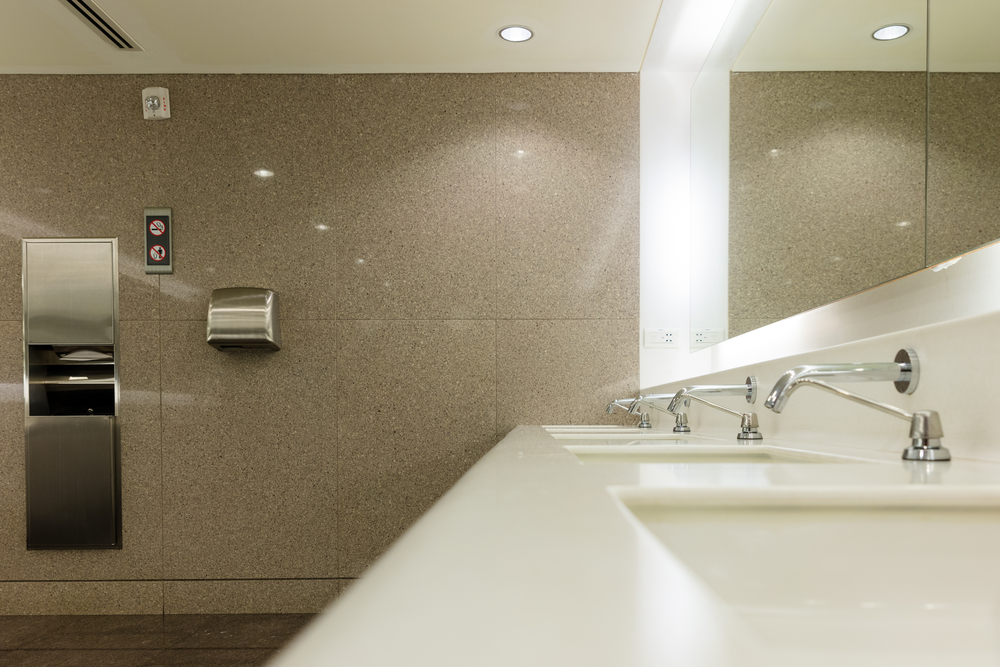After COVID-19: Long-Term Investments Facility Managers Can Make for Health and Hygiene
With the rapid spread of COVID-19 throughout China, Europe, and now the United States, public health officials, including the World Health Organization (WHO) and the U.S. Centers for Disease Control and Prevention (CDC), have been urging individuals to take a number of immediate protective measures to help slow or stop the spread of the virus.

We are all well-versed in these measures, which, to name a few, include washing our hands frequently, covering our noses and mouths with an elbow or tissue when we cough or sneeze, practicing social distancing, and staying home if we are sick. And it seems there is now growing consensus that these measures are critically important to reversing the trajectory of this virus.
Ideally, once the coronavirus pandemic has passed, each of us will continue to implement some if not all of these personal measures in an effort to protect our health and the health of those around us on an ongoing basis. But protecting our health goes far beyond each of us taking responsibility for our personal hygiene and habits.
As we typically spend a large percentage of our days in built environments working, learning, shopping, dining, and being entertained, those buildings also serve a role in protecting our health. To be sure, we are hearing of businesses asking employees to wipe their workstations with disposable sanitizing wipes and EPA-approved disinfectants, replacing in-person meetings with phone calls, and encouraging employees to temporarily work from home.
While these are all important short-term solutions to improving hygiene during the COVID-19 pandemic, following are recommendations for two of the most frequently used areas of a facility that demonstrate a longer-term commitment to the health and well-being of building occupants.
Create a Responsible Restroom
A responsible restroom is one that prioritizes hygiene and helps advance the health and safety of its users.
- Install touchless fixtures: According to the CDC, viruses, bacteria and germs can survive on hard surfaces from hours to days to weeks. Let restroom users keep their hands to themselves and avoid the potential for transmission by touch by installing motion sensor light switches and sensor-operated touchless flush valves, faucets, soap dispensers, and paper towel dispensers.
- Go with paper over air: Studies have consistently shown that paper towels are a more hygienic means of drying hands than jet air. Among them, a study by the University of Westminster in 2010 found that jet air dryers increase the microbiological counts on hands by 42% on finger pads and 15% on palms. It also found that paper towels decrease the microbiological counts on hands by 76% on finger pads and 77% on palms.
- Provide toilet seat covers: Flushable toilet seat covers help keep toilet seats cleaner and provides users with both a layer of protection against germs and an indication of a facility’s attention to hygiene.
Elevate the Breakroom
Too often, the employee breakroom boasts little more than a refrigerator, microwave and sink, an open stack of paper towels, and a counter strewn with open disposable cutlery. While this may be sufficient, it is far from hygienic.
- Offer dispensed cutlery: Disposable cutlery dispensers help improve hygiene through one-at-a-time, fully enclosed dispensing, in which users only touch the utensils they need. Options in cutlery dispensers even include those that dispense wrapped cutlery, in which the eating end of the cutlery is protected, further helping to reduce the potential for contamination.
- Provide dispensed napkins: Much like cutlery dispensers, some napkin dispensers help improve hygiene by ensuring napkins are fully enclosed and automatically dispensed as needed. This helps eliminate the issue of users touching more napkins than they need and further helps to reduce the potential for contamination.
- Offer wipers: In addition to offering surface sanitizing wipes to effectively sanitize your breakroom surfaces, there are many disposable wiper choices that are sturdier than paper towels and more hygienic than reusable cloths for wiping up food spills and cleaning sticky handles and knobs. Many are available in one-at-a-time dispensing boxes or buckets.
Restrooms and breakrooms are among the highest traffic areas of nearly every building. Yes, let’s get past this immediate coronavirus crisis, but then consider making long-term investments that could improve hygiene in these core spaces and improve the health and well-being of building occupants.
This guest blog post was provided by Julie Howard, Vice President and General Manager of GP Pro Towel, Skincare and Aircare Categories. GP PRO is a division of Georgia-Pacific and a leading provider of advanced restroom solutions for commercial facilities. GP PRO is a 2020 Gold Annual Partner of BOMA/GLA. To learn more about GP PRO, visit www.gppro.com.
This article was originally published by Cleaning & Maintenance Management (Copyright 2020 ISSA) at www.cmmonline.com and is reprinted with permission.

